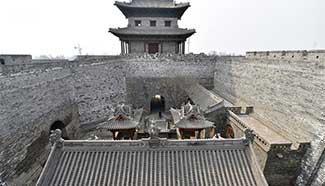BEIJING, March 16 (Xinhua) -- Weng'an biota could be as old as 609 million years, with a margin of error of 5 million years either side, a study by a group of Chinese scientists suggests.
The study was carried out by scientists including some from the Chinese Academy of Sciences (CAS).
The findings indicate that the Weng'an biota is older than the Ediacaran biota, which emerged about 580 million years ago, said Zhou Chuanming, a researcher with Nanjing Institute of Geology and Palaeontology under CAS, who added that the latter was first discovered in 1940s in Australia.
Before this, a lack of reliable dating for the Weng'an biota had affected people's knowledge about the biological evolution in the Ediacaran Period (from around 635 million years ago to 541 million years ago), Zhou said.
Discovered in southwest China's Guizhou Province, Weng'an biota features different types of fossils, including various spheroidal fossils, which provide crucial palaeontological evidence for the radiation of multicellular eukaryotes after the termination of the Neoproterozoic global glaciation.
The new finding originates from the discovery of a tuffaceous bed immediately above the upper phosphorite unit in the Doushantuo Formation at Zhangcunping in central China's Hubei Province.
Litho-, bio and chemostratigraphic correlations suggest that the unit can be well correlated with the upper phosphorite unit at Weng'an, which is the main horizon of the Weng'an biota, according to Zhou.












